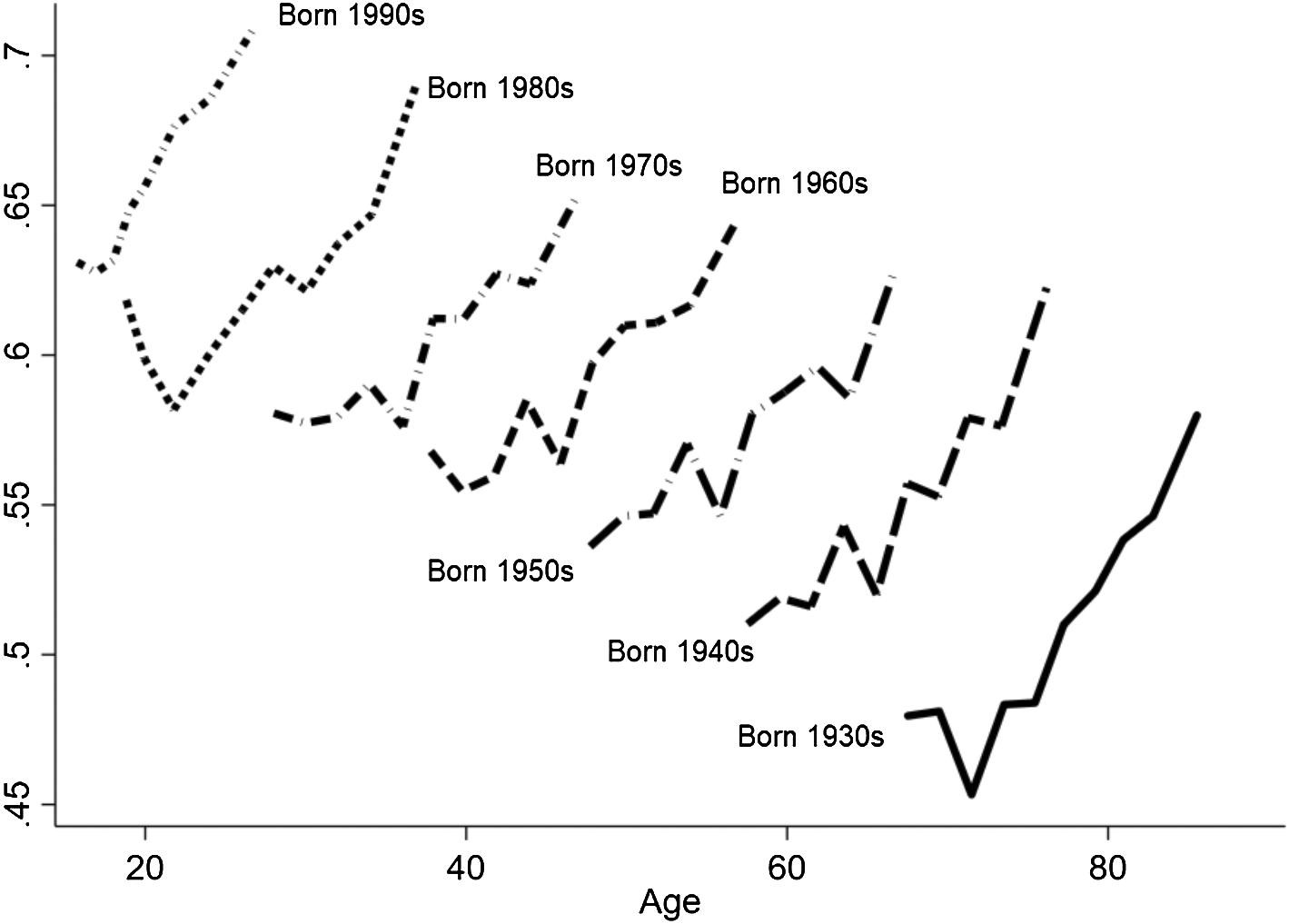Michele Battisti, Christian Dustmann, Uta Schönberg
Technological and organizational change (T&O) is seen as one of the most important factors driving the decline in the employment share of routine jobs; that is, jobs that are predominantly repetitive and prescriptive in the tasks required. This is illustrated in a strand of papers, see for example Autor, Levy, and Murnane (2003), Goos and Manning (2007), and Acemoglu and Autor (2011). However, the disappearance of routine jobs does not necessarily imply that workerswho worked in these jobs (routine jobholders) exit employment, although this scenario dominates the popular public debate. Even if their jobs disappear because of T&O, routine jobholders may move to other jobs with a task content that is complementary to T&O, either in the same firm or in other firms.
In a new paper forthcoming at the Journal of the European Economic Association (see also CReAM DP), Michele Battisti, Christian Dustmann and Uta Schönberg (BDS hereafter) address this issue, drawing on a survey panel data set of German firms containing detailed information on T&O investment over an 18-year period, matched to registry data on the complete work histories of all workers that these firms ever employed. This data source allows them to uncover responses of both firms and workers to T&O.
Most of the decline in routine employment takes place within firms
The authors find that the decline in the employment share of routine jobs in the aggregate economy previously documented in the literature primarily occurs within firms, rather than through lower employment growth of routine-intensive firms. Moreover, while past research has established that industries or regions with higher levels of T&O adoption experience more pronounced declines in routine employment share (e.g., Michaels et al., 2014; Autor and Dorn, 2013; Akerman, Gaarder, and Mogstad, 2015), BDS show that firms which adopt T&O reduce their routine employment share relative to non-adopting firms even in the same industry and the same local labor market.
T&O eliminates routine jobs, but routine jobholders upgrade their skills and stay in employment
The authors further explore how workers adjust to firm-level T&O. While T&O reduces the proportion of the firm’s jobs that are routine in nature, the routine jobholders themselves are not more likely to move into non-employment following T&O, nor do they suffer reduced earnings growth. Rather, they are more likely to move to higher-skilled non-routine jobs, either in the same firm or a different firm. Thus, while T&O does replace routine jobs, workers holding those jobs are not necessarily worse off afterwards. There is one exception: for workers older than 55, T&O is associated with a permanent loss of employment. One explanation for this finding is that changing job as a response to T&O necessitates retraining and investing in new skills, which is not worthwhile for many older workers.
Firms that provide apprenticeship training and unionised firms are more likely to upskill their workers when introducing T&O
Investigating differences across firms, BDS find that upgrading of routine jobholders to abstract jobs following T&O is more common in firms that run apprenticeship training schemes. One explanation for this finding is that these firms already have experience in providing in-house training, making it easier for them to train workers whose skills need upgrading after the introduction of T&O.
Moreover, BDS also identify more frequent upskilling of workers in response to T&O in firms that are part of the employer association, and thus recognize unions (in Germany, only firms that are members of the employer association are required to implement union wages). One explanation for this finding is that unions are actively engaged in the provision of training opportunities for workers, which may in turn benefit firms.
Implications and Conclusions
In line with the hypothesis that technological change is routine-biased, BDS show that firms that implement T&O reduce the share of their workers in routine jobs. However – and in contrast with the common view, driven mostly by US-based research, that new technologies and accompanying organizational restructuring leads to non-employment or a deterioration in job quality for a large fraction of the workforce – BDS’s findings suggest that (at least in Germany and with the exception of older workers) workers holding routine jobs prior to T&O implementation do not suffer employment losses or reduced earnings growth on average, but instead move up to more skilled jobs.
One important implication of their research is that contra previous analyses of US workers, changing skill requirements caused by technological change need not result in a large welfare loss even for those workers whose jobs disappear and whose current skills become partially obsolete. While methodological and data differences could partly explain these opposing conclusions, the results may instead reflect fundamental distinctions between the German and the US labor markets, implying that the two labor markets respond differently to technological change. In line with the latter hypothesis, BDS’s results suggest that the wide-spread apprenticeship system and unions’ involvement in training activities in the German labor market may help lessen T&O’s possibly harmful career effects.
These findings highlight that there are potential policy instruments that could cushion T&O’s adverse effects on the workforce through in-firm training, likely without compromising competitiveness. They also have significant implications beyond the labor market: if economic factors do indeed play an important role in explaining the recent rise of populism, then institutions that can shield vulnerable workers from negative consequences of technological progress may also have far-reaching political consequences.
References
Acemoglu, Daron, and David Autor. 2011. “Skills, Tasks and Technologies: Implications for Employment and Earnings.” In Handbook of Labor Economics, 4B:1043–1171.
Akerman, Anders, Ingvil Gaarder, and Magne Mogstad. 2015. “The Skill Complementarity of Broadband Internet.” Quarterly Journal of Economics 130 (4): 1781–1824.
Autor, David H, and David Dorn. 2013. “The Growth of Low-Skill Service Jobs and the Polarisation of the US Labor Market.” American Economic Review 103 (5): 1553–97.
Autor, David H., Frank Levy, and Richard J. Murnane. 2003. “The Skill Content Of Recent Technological Change: An Empirical Exploration.” Quarterly Journal of Economics 118 (4): 1279–1333.
Battisti Michele, Christian Dustmann and Uta Schönberg. 2022. “Technological and Organizational Change and the Careers of Workers.” Journal of the European Economic Association, forthcoming.
Cortes, Guido Matias. 2016. “Where Have the Middle-Wage Workers Gone? A Study of Polarisation Using Panel Data.” Journal of Labor Economics 34 (1): 63–105.
Goos, Maarten, and Alan Manning. 2007. “Lousy and Lovely Jobs: The Rising Polarisation of Work in Britain.” Review of Economics and Statistics 89 (1): 118–33.
Michaels, Guy, Ashwini Natraj, and John Van Reenen. 2014. “Has ICT Polarized Skill Demand? Evidence from Eleven Countries over Twenty-Five Years.” Review of Economics and Statistics 96 (1): 60–77.




